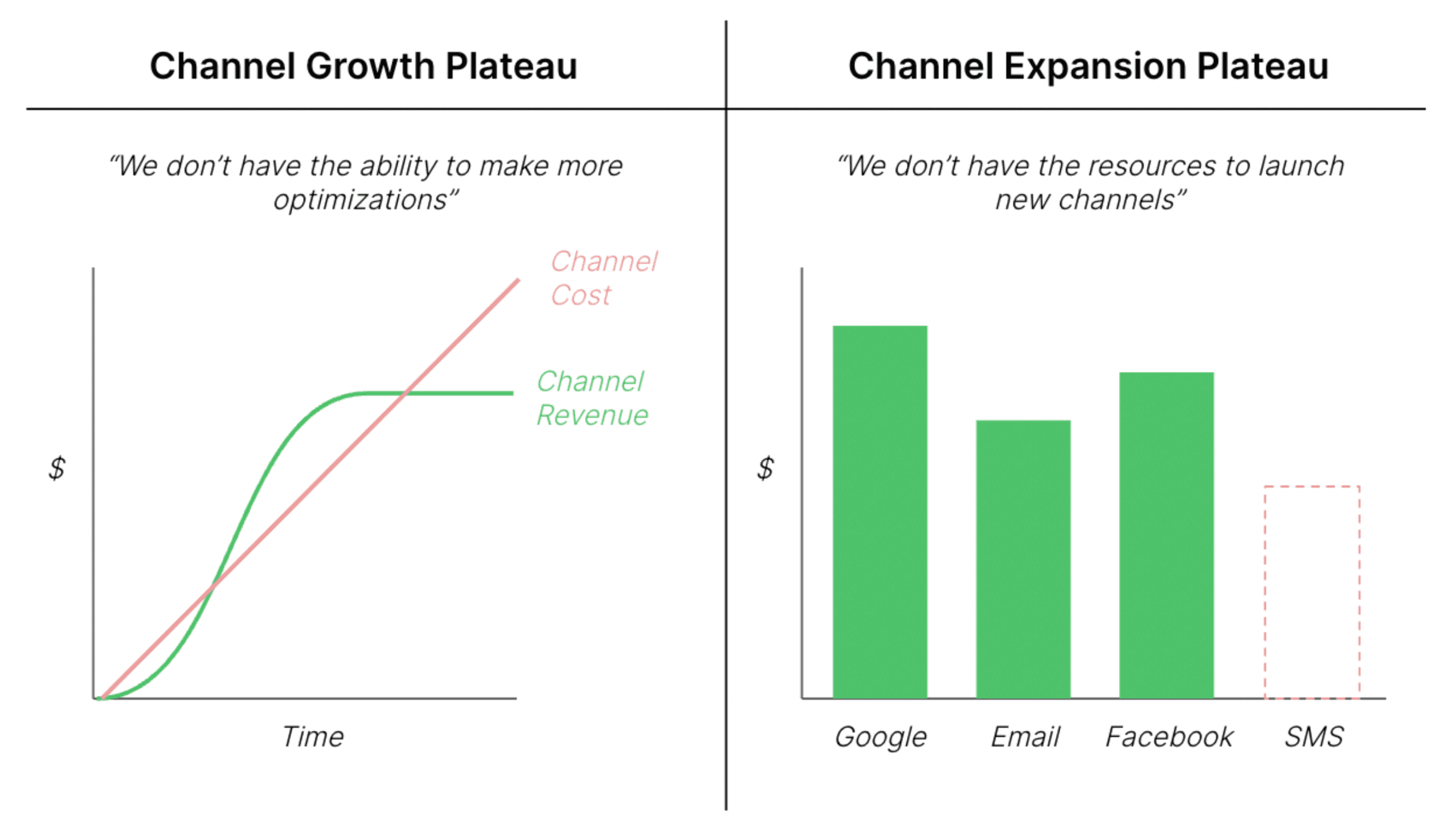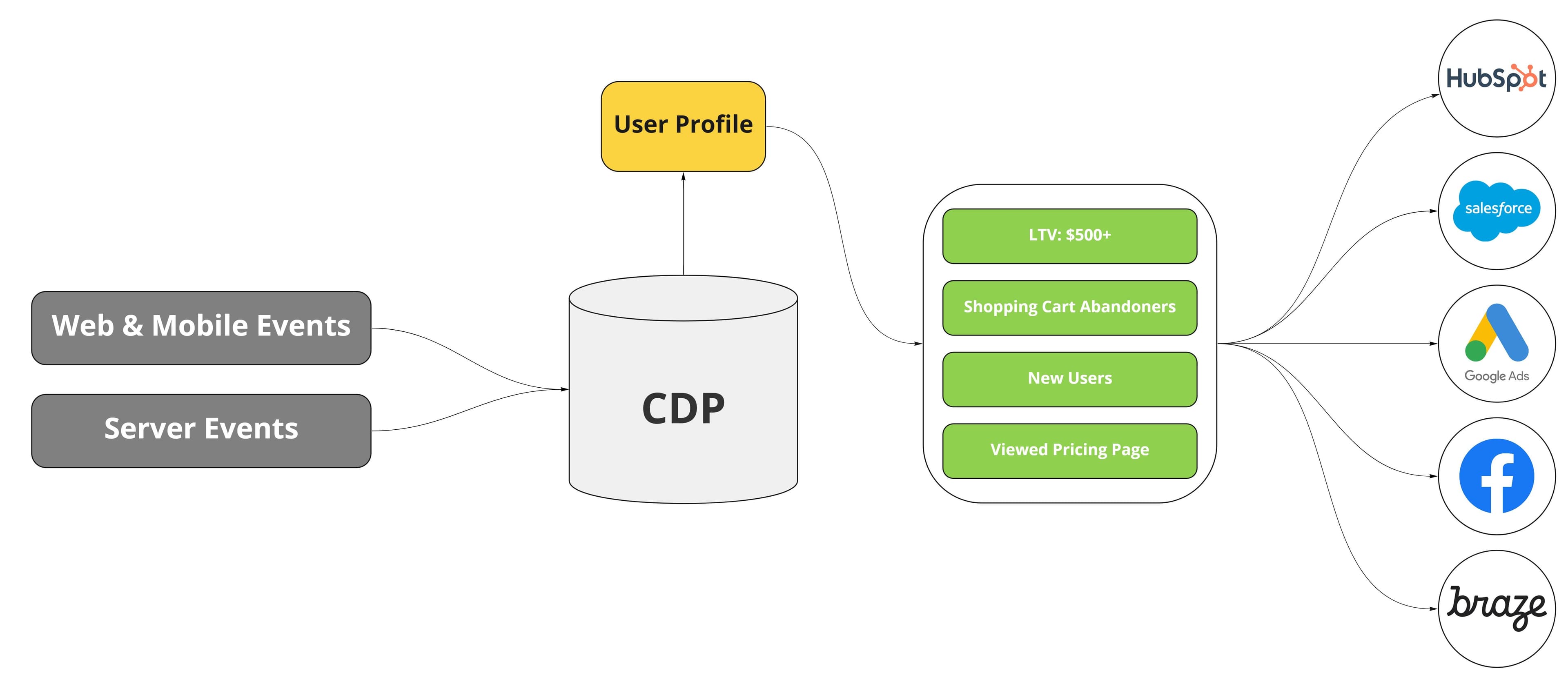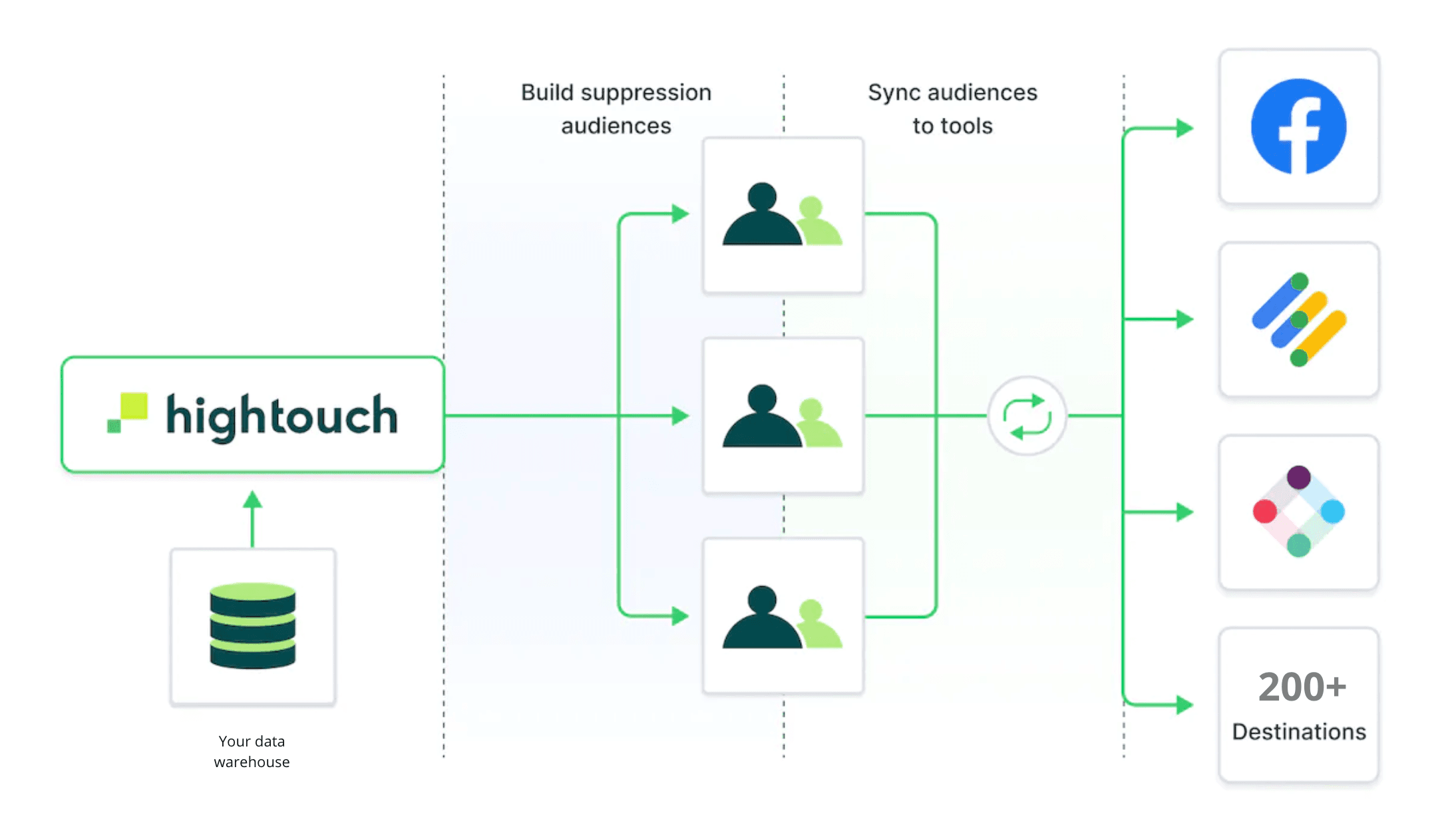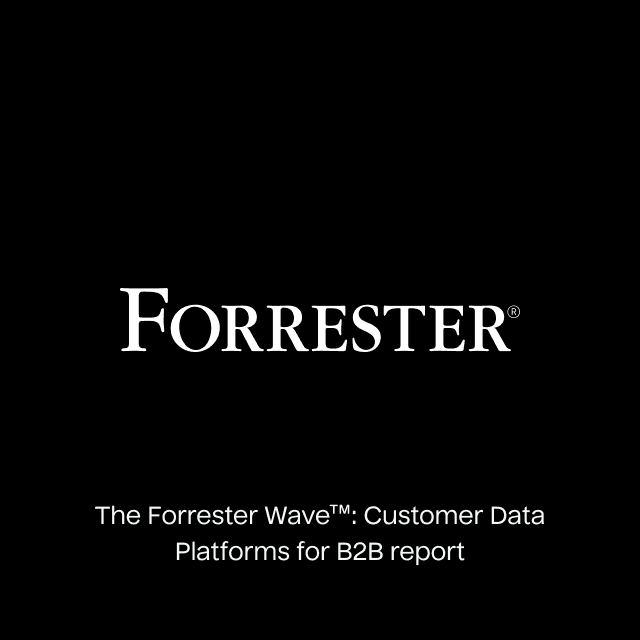In today's ever-evolving digital marketing landscape, every marketer's dream is to achieve exponential channel growth. The excitement of seeing significant leaps in leads, sign-ups, and revenue after launching new campaigns or an entirely new channel is unmatched. However, there comes a point when these advancements start to stagnate, leaving marketers scrambling for new strategies to reignite growth. This phenomenon, which I call the "growth plateau," presents a formidable challenge for even the most advanced growth teams to overcome.
In this blog, we will dive into the root causes of these growth plateaus and explore the transformative potential of implementing a modern architecture that centers on the data warehouse. With this new architecture, today's marketing teams can, in minutes, unlock the full potential of customer data and break through their growth ceiling to achieve sustainable growth for their business.
Types of Growth Plateaus
You know you've hit a growth plateau when suddenly, the daily or weekly improvements in metrics that you've become accustomed to hit a standstill. After continuing to iterate without avail, you find yourself scrambling to find a win anywhere you can.
Through my own experience feeling these standstills, I have identified two primary types of growth plateaus:
- The channel growth plateau
- The channel expansion plateau
The channel growth plateau occurs when the existing channels reach their optimization limit, making it challenging to achieve further improvements. Marketers find themselves unable to extract more value from their current channels.
On the other hand, the channel expansion plateau arises when launching new channels becomes a slow and inefficient process, hindering marketers from tapping into new channel opportunities effectively.

Regardless of the plateau being in channel growth or channel expansion, both can seriously impede growth marketers and entire organizations from hitting their growth goals. Once hit, these plateaus or "growth ceilings" must be overcome as quickly as possible.
The Root Cause of Growth Plateaus: Inaccessible Customer Data
Addressing the blockers that impede optimization and rapid deployment of marketing channels is critical to overcoming these plateaus. Let's explore these blockers more deeply and highlight why customer data is at the root of solving them.
Inability to Optimize Channels Further
There are many ways to optimize marketing channels. Common approaches include refining messaging, copy, and visuals, offering limitless experimentation opportunities. However, optimizing these variables can only improve performance so far. The true catalyst for unlocking significant advancements lies in incorporating customer data. By leveraging customer data, marketers gain access to new levers to pull, enabling them to push the boundaries of a channel before it reaches its saturation point.
Some examples might be:
- Message personalization: When you've exhausted generic brand and product feature messaging to your audience, you might encounter a growth ceiling. However, personalized messaging tailored to each individual can unlock additional growth potential. For instance, leveraging customer data, a B2B SaaS company can determine the potential savings each targeted user could achieve based on variables like their employee count and current tech stack, incorporating this personalized information into their marketing campaigns. Similarly, a publisher can drive engagement by tailoring messages with the most relevant article to an individual reader rather than showcasing the week's most popular post.
- Audience targeting: If you're experiencing diminishing ROAS as you increase spend on native audiences, it may be necessary to expand your target audiences to new potential customers. One effective approach is sharing your high-value customer lists with your various ad platforms to identify lookalike audiences. You can substantially increase your growth ceiling by targeting a fresh pool of users similar to your most valuable customers.
- Audience suppression: Minimizing wasted spend is another straightforward method to elevate your growth ceiling. Utilizing existing customer data to exclude audiences of existing customers, lost deals, and companies in irrelevant industries optimizes your budget allocation, increases ROI, and ensures you are only targeting the right audiences across your campaigns.
- Enriched conversion feedback: Many teams experiencing slowing growth have likely not fully optimized their conversion feedback loops. While a conversion pixel on your website can provide some signal for ad platforms to use in optimization, due to new privacy laws and advanced ad blockers, these cookie-based solutions often send incomplete and inaccurate signals (if they aren't blocked entirely). Enhancing this feedback loop by sending server-side conversion signals involves passing back enriched customer data and additional contextual data, such as order value or lead score. Doing so gives ad platforms the ability to fully optimize campaign spend and, thus, continuously grow channel ROI.
Inability to Launch New Channels Quickly
~70% of growth experiments fail - and that's OK.
This said, if you can only launch new channel tests once a month, it could take an entire quarter before seeing any growth uptick. In contrast, a team that can move quickly to integrate with and test multiple new channels in any given month will see wins in a shorter period of time to help compound their growth.

Sri Batchu, Head of Growth at Ramp, on his team's testing philosophy
Suppose you have to manually build new data infrastructure or pipelines for each new channel you want to test. In that case, you will have slow testing velocity and consistently face pushback from data teams on using resources for unproven initiatives.
Here are a few examples of types of data you need to be able to integrate as you test new growth channels:
- Customer data into messaging tools: When launching a new email marketing program, you'll need a CRM or ESP that actually has access to your customer data in the tool. Integrating this data can be tedious and likely involves data engineers working on piping data into the new tool, or worse, marketers wasting time uploading CSV lists manually.
- First-party audiences into ad platforms: Similarly, if you want to test a new ad platform (ex. TikTok), you must set your program up for success with effective targeting. This will involve similar technical challenges as discussed previously, as you will have to get an audience of current customers into the platform(s) to exclude them. Similarly, when exploring remarketing efforts, it becomes essential to establish an audience of existing users before launching your campaigns.
- Conversion events into ad platforms: An often overlooked step in the integration of a new ad platform is setting up pipelines to send conversion data back from your business to the ad platform. Platforms like Google Ads use this critical data set to optimize showing ads to the users who are more likely to convert. Without conversion tracking, your campaign adopts "spray-and-pray” targeting while lacking an accurate assessment of the channel's viability for further testing.
Growth Marketing is a Speed and Agility Game
If you can't tell by now whether you are working to bolster channel growth or expedite channel expansion,you must unlock the ability to quickly and easily deploy the necessary integrations to feed your various platforms with fresh and accurate customer data.
“When marketers can access insights that inform the customers' unique interactions across the customer journey, they can speak directly and more effectively to customer needs at each lifecycle stage.”

Agness Allagh
Former Head of Marketing Operations and MarTech at Meta
The best growth teams have an unbounded ability to move with speed and agility when exploring new methods to leverage their customer data to create better customer experiences.
Doing so with custom pipelines and manual CSV uploads just won't cut it… so where to turn?
Aren’t Traditional Customer Data Platforms the Solution?
The most effective way to enhance your team's integration and activation speed is to implement tools that ensure democratized customer data access and eliminate organizational or technical obstacles. Teams have historically turned to implementing a Customer Data Platform or “CDP” to do so.
A Customer Data Platform (CDP) is a platform designed to give marketing teams access to their customer data for use cases across channels. The main purpose of a CDP is to create a central database for customer data, while providing non-technical teammates with the tools necessary to sync customer data out to any platform it's needed in.
To unlock these capabilities, organizations must invest millions of dollars and months of implementation time to collect customer data in standard “schemas” enforced by CDPs. CDPs are then able to store profiles and associated customer data in their own systems (regardless of if you're already doing so) before providing the necessary capabilities to deploy audiences to various platforms.

Traditional CDP Architecture
Need a new audience? CDPs allow you to create the audience using no-code logic builder tools and send it to your platforms with a click of a button. Launching a new channel? CDPs have built out integrations with hundreds of ad platforms and SaaS tools so you can enter an API key instead of building custom pipelines.
Combine large SaaS acquisitions and multi-million dollar ad budgets (ex. Twilio and Salesforce) with the lofty promises of CDPs, and you can likely see why they have been the default answer for CMOs looking to break through their growth ceiling.
Sure, CDPs may achieve their initial goal - but are they worth the cost? Is there not a faster and more cost-effective way to break the growth ceiling?

The Composable CDP: All the Benefits… Fewer Headaches
Thanks to the rapid adoption of Cloud Data Warehouses (ex. Snowflake, Databricks, Bigquery), growth teams today are rapidly pivoting away from traditional CDPs to a simpler and more flexible growth architecture dubbed the Composable CDP.
The idea behind this new architecture is simple: Leverage a Data Activation platform like Hightouch to activate your existing customer data directly from the data warehouse to over 250+ destinations.

Data teams get to focus on centralizing data into the data warehouse, while marketers get the tools they need to create rich 360-degree customer profiles, build audiences and run experiments at scale across any marketing or advertising channel.
Facing a channel growth plateau? Send more customer data points, new audiences or experiments to your existing ad platforms in a few clicks.
Facing a channel expansion plateau? Add that new channel to all your existing audience and conversion syncs in minutes.

It’s the agility that modern growth teams need to get sh*t done - alongside the security, flexibility and price point that your business deserves.
Conclusion
Modern marketing teams face a notable challenge in overcoming growth plateaus. The inability to effectively utilize customer data hinders their ability to optimize existing channels and explore new ones. However, the adoption of the Composable CDP offers a solution that provides the necessary agility for growth teams to surpass these obstacles.
By embracing the potential of customer data and implementing this modern growth architecture, marketing teams can break through growth plateaus and unleash their full potential for exponential growth.
For further information, feel free to join us for our next 23-min CDP webinar to see how to sync conversion events to ad platforms or schedule a demo with our team to learn more.















